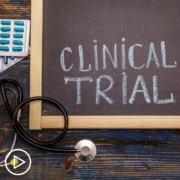Deciding on a Lung Cancer Treatment? Essential Testing for Optimal Care
Deciding on a Lung Cancer Treatment? Essential Testing for Optimal Care from Patient Empowerment Network on Vimeo.
Dr. Erin Schenk, a lung cancer specialist, discusses essential testing patients should undergo to help determine which treatment path may be right for them.
Dr. Erin Schenk is an assistant professor in the division of medical oncology at the University of Colorado Anschutz Medical Center. Learn more about Dr. Schenk and her lung cancer research, here.
See More From INSIST! Lung Cancer
Related Programs:
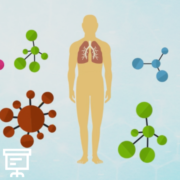
|

|
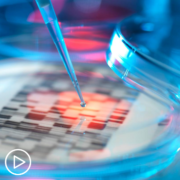
|
Transcript:
Dr. Schenk:
Surgery is often a consideration in patients where the cancer is still contained within the lung. Radiation therapy is also a possibility, and then therapies that I give as a medical oncologist include chemotherapy medicines, immunotherapy medicines, and occasionally targeted therapy medicines. A lot of the treatment decisions depend on where the lung cancer is in the lungs and if it’s spread anywhere else.
Whenever a patient is newly diagnosed with lung cancer, there are a number of pieces of information that are necessary to help us determine the best treatment plan for that patient. So, first is imaging. Often, it’s important to find out if they’re locations other than the lung that lung cancer might be located. This includes a CT scan, PET scans, and even MRIs of the head to better understand whether or not the cancer has spread elsewhere.
Oftentimes, imaging, and also biopsies go hand-in-hand. So, what’s very important is that we understand what type of lung cancer a patient is being diagnosed, and we better understand that by getting a tissue sample or a biopsy from a lesion within the body. After we get a biopsy, some of the testing can be done to understand what type of lung cancer a patient is diagnosed with. And in types, we can divide it up into three main types.
So, one is small cell lung cancer, and the other two are under the category of non-small cell lung cancer. And this includes patients who have adenocarcinoma or squamous cell. Both of those are types of non-small cell lung cancer.
Genetic testing has become a key feature in the treatment of patients with lung cancer. Now, by and large, most of these are within patients with non-small cell lung cancer who have adenocarcinoma histology. One of the really important pieces of information for me as a medical oncologist are some of the genetic markers or abnormalities that are within the cancer cell. I like to describe this as better understanding the cancer cell’s vulnerabilities because we’re able to determine whether or not certain mutations or fusions which are abnormalities within the cancer cell that have caused them to grow or present.
So, some of the more common, some of the more readily recognized abnormalities we look for are EGFR mutations, ALK fusions, ROS1 fusions, and we also need to look for BRAF mutations as well as abnormalities in RET and MET. There’s a wide variety of different therapies that we can give based on the presence of one of these mutations or fusions. Additionally, now this is whether you have adenocarcinoma or squamous cell lung cancer, both non-small cell lung cancer types.
We also look for PD-L1 expression because the level of PD-L1 expression on cancer cells helps us better understand whether immunotherapy can be used alone or in combination with chemotherapy medicines.
And these tests for mutations, fusions, and PD-L1 status, are often done predominantly in patients who have metastatic disease or disease that has spread outside of the lung. That’s the scenario where we use these therapies.
Genetic testing is very critical in patients who have adenocarcinoma lung cancer that has spread outside of the lungs. What we understand about these mutations and fusion is that often they arise in patients who have never smoked or smoked a very small amount in the distant past and tend to be younger on average. So, usually, the average patient with lung cancer is in their 70s, patients who have a mutation or fusion often are in their 40s or 50s.
And so, getting this additional testing is really important because it can help your cancer doctor and team determine whether or not you’re eligible for targeted therapies which are pill medicines that we can give to help control the cancer that targets your specific cancer vulnerability. I think sometimes the full gamut or the full range of different molecular abnormalities that are tested for occasionally are missed.
And I think if you ask your doctor or your team why only a certain set of mutations or fusions were tested for, I think that would help prompt any discussion with your doctor and cancer team. Sometimes there are technical issues that we run into doing any test. And occasionally it might happen that the biopsy we were able to or your team was able to get on you, wasn’t enough tissue. There’s a significant amount of tissue that’s needed to do all of the necessary molecular testing
So, sometimes, complete molecular testing isn’t done on patients’ samples because there just isn’t enough tissue.
Occasionally, patients will need to get another biopsy to better understand the full range of molecular abnormalities within the cancer cell. Sometimes, we can also do tissue – or excuse me, blood biopsies, so liquid biopsies, that help to look for some of the cancer abnormalities.
Occasionally, we can see them in the blood, and that can give us information as well. And sometimes, there are other more technical reasons as to why your doctor or team did not pursue further testing. I wanna encourage you to ask to better understand why additional testing wasn’t done.


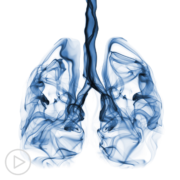
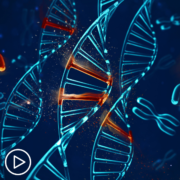

![[ACT]IVATED NSCLC Biomarkers Resource Guide II [ACT]IVATED NSCLC Biomarkers Resource Guide II](https://powerfulpatients.org/wp-content/uploads/ACTIVATED-NSCLC-Biomarkers-Resource-Guide-II-180x180.png)
